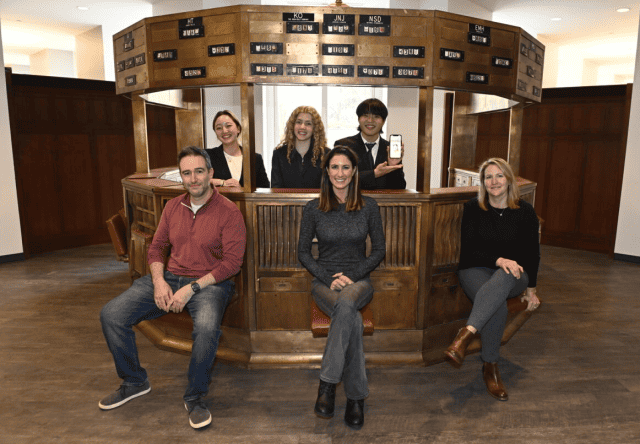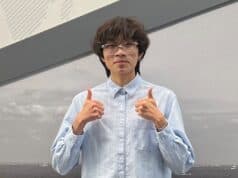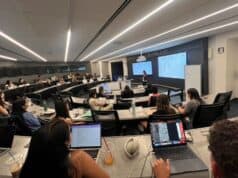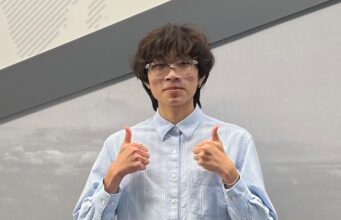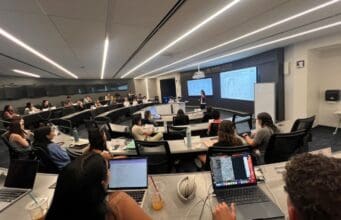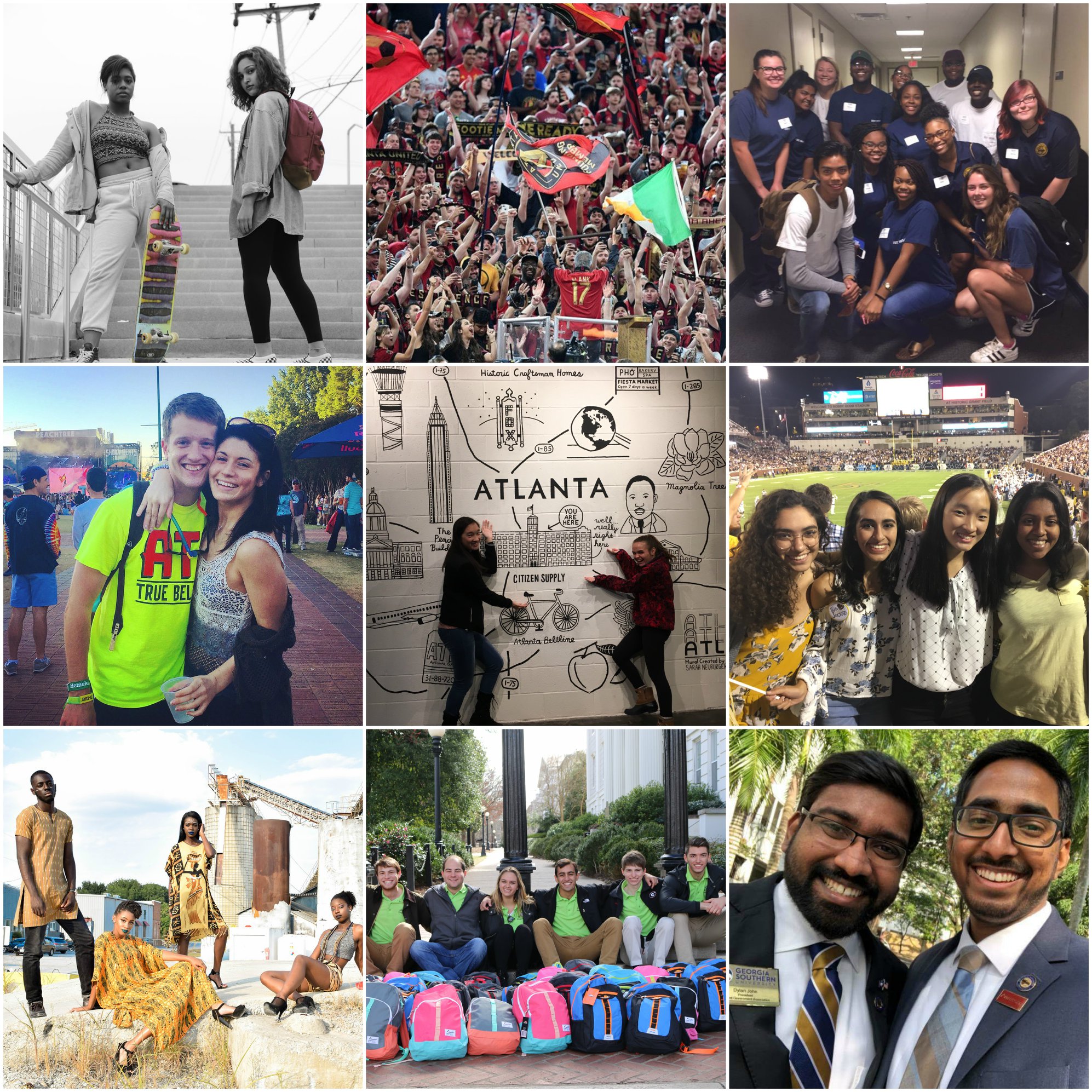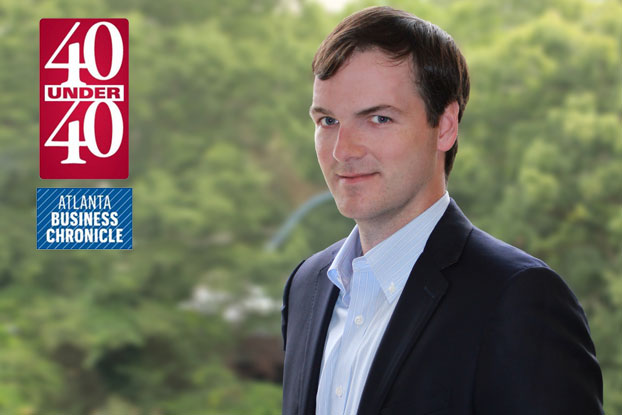The Business Communications Strategy course is designed to introduce students in Goizueta’s undergraduate BBA program to the skills necessary to prepare and deliver an effective client presentation. A key component of the class is the month-long professional communication strategy case competition. During this project, students put their new-found skills to the test by working with a company to address a real business challenge. This fall semester, students collaborated with soFree, an early-stage technology company that addresses mental health.
The idea for soFree began after siblings Mandy and Jeremy Morris experienced the sudden death of their brother. As they sought stress relief solutions, they found limited options. Solutions such as medication, therapy, and exercise required planning and time, which wasn’t always available. But the siblings realized they had the right combination of backgrounds to do something about that. Mandy is a certified clinician and executive coach and Jeremy has founded several technology companies. So they decided to team up and create an app that provided what they were seeking—effortless, immediate stress relief without side effects. The result was soFree, an app that uses bilateral stimulation (BLS) to engage the body’s innate stress-relief abilities. Primary forms of BLS include eye movements , touch, and sound to invoke positive thoughts, emotions, and body sensations.
A Fitting Collaboration Offers First-Hand Experience
Molly Epstein, professor in the practice of organization and management, considered the collaboration with soFree a good fit for the students. “More than any other generation, Gen Z prioritizes mental health and feels comfortable talking about it,” she says. “Additionally, Gen Z is the most likely to seek mental health treatment or therapy.”
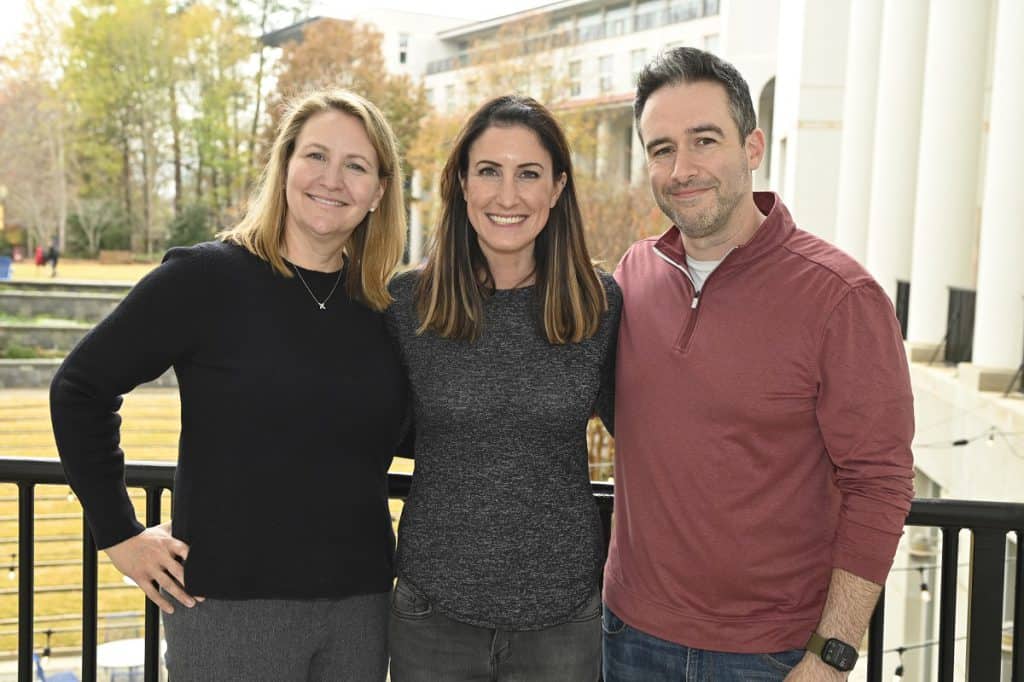
This fall, 54 student teams met with the founders (Mandy Morris is soFree’s CEO and Jeremy Morris is the company’s CTO) and soFree’s CMO, Jen Gordon. For the case competition, the students first identified potential subscribers to the soFree app. They then created a two-part strategy to reach and capture those subscribers. Three weeks later, the teams presented to their professors. Joining Epstein were Nikki Graves, associate professor in the practice of organization and management and Steve Savage, associate professor in the practice of organization and management. After the presentations, each professor selected two finalist teams to present their strategies to the client.
Winning Team Tackles Mental Health in Student Athletes
The winning team, Game On, Stress Off, targeted student athletes. It was an obvious choice given that three of the team’s four members are involved in athletics. Heejo Hyun 25BBA is on Emory University’s golf team. Isaac Snyder 25BBA plays on the school’s basketball team. Jaewon Shin 25BBA is a student ambassador for the Atlanta Hawks. Claire Lantsman 26BBA rounds out the team. Their presentation began with a video featuring two of the most decorated Olympic athletes. Gymnast Simone Biles and swimmer Michael Phelps spoke about their struggles with mental health despite reaching the pinnacle of success in their respective sports. During the presentation, the team noted that “student athletes face common stressors, such as impacts from coaches, injuries, and time allocation from their demanding schedules.”
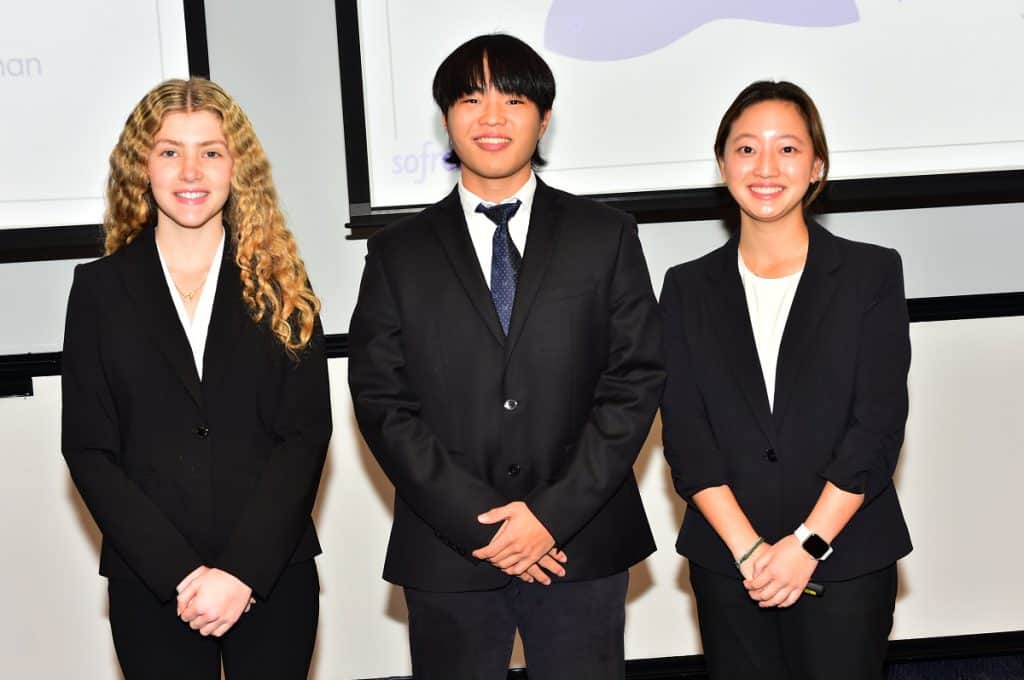
The team suggested a “connect, cultivate, and capture” approach to reaching and capturing its target audience. To start, they proposed soFree attend specific conferences to network with Division I collegiate athletic directors, counselors, and other stakeholders responsible for making key decisions about student athletes. They also suggested establishing a student ambassador program with student athletes to raise brand awareness.
Though working with an early stage start-up meant the teams had little, if any, existing data to work with, the advantage was that the students were able to communicate regularly with the soFree team. “It truly felt like we were employees of the company,” says Shin. “Like we were really helping to start it up.”
Runner Up Team Targets Aid for Veterans
The target audience for “soFree for Veterans,” the runner up team, was veterans who struggle with suicidal ideation, depression, and PTSD. The team consisted of Samantha Blackman 26BBA, Olly Copplestone 26BBA, Nico Lee 26BBA, Piper Cohen 26BBA, Eden Tsao 26BBA, and Daphne Zhao 25BBA. They proposed that soFree expand the app’s compatibility to work with a broader selection of wearable technologies. The team also suggested collaborations with existing veterans’ groups such as The Wounded Warrior Project and Emory Healthcare Veterans Program.
The soFree team applauded the creativity the teams exhibited. “The research was well done and documented,” says Gordon. “We got a wide variety of interesting perspectives that had a lot of value.”
One idea that resonated with the soFree team came from another of the six finalist teams, “Gen Z and Millennial Moms.” In addition to recommending soFree use social media to advertise on podcasts, YouTube, and Instagram, the team recommended the creation of pop-ups at Costco where users could demo the app. “We were blown away by that idea,” says Gordon. “That never crossed our minds.”
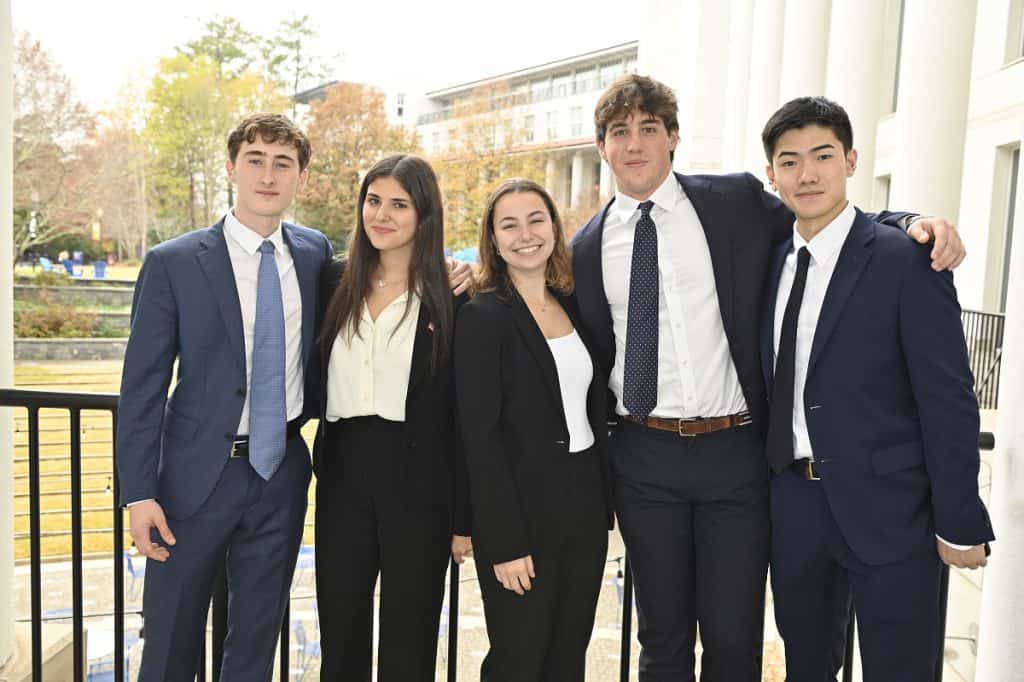
The faculty found the presentations impressive as well. “A huge part of what we teach in business communications is how to create compelling and persuasive presentations and documents. It’s something I really emphasize in my class. For that you need structure and audience analysis. You need an understanding of what they know, what they don’t know, and what they need to know,” explains Graves. “The teams did a really great job with audience analysis. They walked the clients through that every step of the way.”
Getting Specific and Learning From Past Mistakes
Each team has a teaching assistant or experienced upperclassman to mentor them through the case competition. Mafe Lopez Caballero 24BBA assisted the Game On, Stress Off team this fall. She notes that the target audience must be broad enough to be profitable, but “not so broad that you don’t know where to start or what to look for.”
Copplestone and Blackman feel being specific helped the Veterans team stand out. “Having that really targeted audience allowed for more creative and targeted recommendations,” says Blackman.
Snyder mentioned that his Game On, Stress Off team had a less than stellar Business Communications midterm project. That’s part of what inspired them to do better during the case competition. “We were able to see where we fell short,” Snyder says of the midterm. “We had that initial chance to present, receive feedback, and regroup. Then we got to do it one more time, and that made our second project so much better.”
Internal Communication Skills Matter
On the day of the final presentation, Snyder was traveling with Emory’s basketball team. The other Game On, Stress Off team members were able to present Snyder’s section of the presentation without a glitch. “Everybody was very collaborative and empathetic,” says Lopez Caballero of the team. “They were really good at communicating what they needed, what they could commit to, and what they couldn’t commit to. And they were really good at filling in for each other.”
Likewise for the Veterans team. “People were open to constructive criticism and kind when they were providing that criticism,” says Blackman. “It doesn’t matter how good one individual is at presenting their part. At the end of the day it’s a group presentation.”
New BBA Curriculum Stresses Experiential Learning
As part of the BBA program’s new curriculum, students must enroll in an immersive project-based elective in the final year of the program. At that time, explains Andrea Hershatter, associate professor in the practice of organization and management and senior associate dean of undergraduate education, students will analyze and address a complex, real-world organizational or societal need.
Students enroll in the Business Communication Strategies course in during their first year in the BBA program. The class gives them a preview of what’s to come throughout the rest of their coursework. “Students might not yet have all the tools they need to arrive at actionable recommendations. However, the business communications experience gives them an approach to doing so. It also instills an appreciation for the value of the business knowledge they will soon acquire in core and elective classes,” Hershatter explains.
The business communications case competition is an important introduction into experiential learning, notes Epstein. “We’re not just teaching them theory. Their final grade depends on how they’re able to apply that theory,” she explains. “Working with a real-world company is a really powerful way for them to understand the types of challenges they’ll face once they’re in the workplace.”
The Takeaway
The students are aware of the insights they gain from the course and the case competition. “The class taught me a lot about public speaking and being able to effectively structure an argument,” says Lantsman. “Having real practice when you’re in college is so invaluable. This is not the last time we’re going to have to present in front of executives. It’s just the beginning. Getting that exposure early on definitely helps us be more confident.”
Copplestone is also grateful for the experience. “Business communications teaches you how to communicate effectively and clearly which is something that is incredibly important,” he says. “It’s really advantageous for most professional careers to be able to stand up in front of a room of people and explain or pitch your ideas.”
When Hyun began the class, she says she was scared of public speaking and had issues with fidgeting. “Having that experience—doing rather than just reading and writing and memorizing how to do things—gives you an invaluable lesson. It helps you grow as a person.”
At Goizueta Business School, we’re in the business of creating powerful leaders. Learn how Goizueta’s undergraduate BBA program can help prepare you to tackle any challenge, anywhere, in any field.


